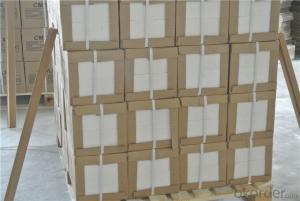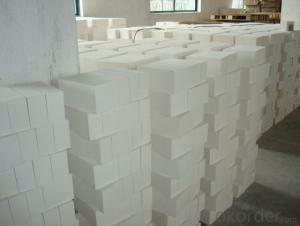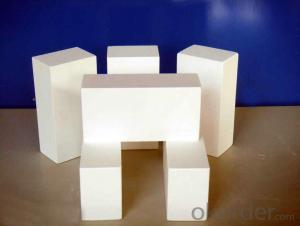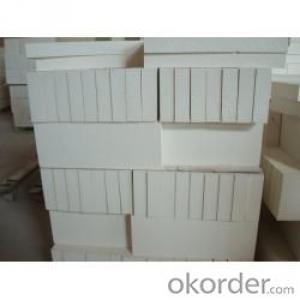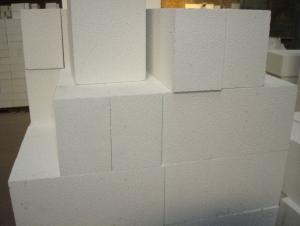Unshaped Insulating Bricks Fire Clay Bricks for Furnace Use
- Loading Port:
- Qingdao
- Payment Terms:
- TT OR LC
- Min Order Qty:
- 1 m.t.
- Supply Capability:
- 1000 m.t./month
OKorder Service Pledge
OKorder Financial Service
You Might Also Like
Thermal Insulation Fire Clay Brick
Refractory brick is a block of refractory ceramic material used in lining furnaces, kilns, fireboxes, and fireplaces.
We provide high quality Refractory Fire Bricks that are used on wide range in the various industries like Cement, Glass and Steel. Refractory Fire Bricks are provided as per the quantity and specifications required by the customers. We provide an extensive range of Refractory Fire Bricks at reasonable prices that depend upon the quantity ordered.
Application
Insulating Fire Brick are used for the lining of converter, alternating current arc furnace, direct Current arc furnace and the ladle slag line, etc.
Company Advantage
(1)Long Insulating Fire Brick manufacture history: 25 years manufacturer
(2)Advanced equipment
(3)Diversification of production standards: ISO ANSI FEPA JIS ASTM
(4)Professional marketing team and after-sale service
Insulating Fire Brick main feature:
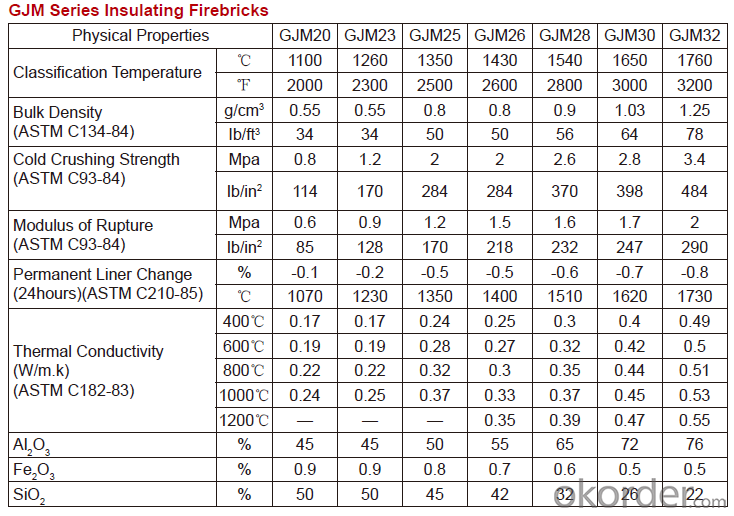
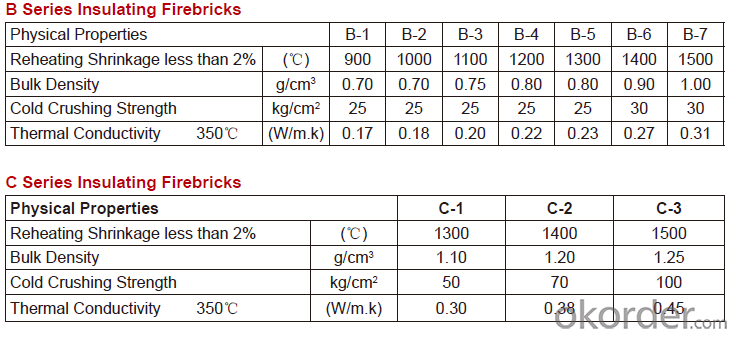
Equipment
1 unit of Ceramic Abrasive (SG Abrasive) pilot production line
2 units of Compact grain Abrasive pilot production lines
1 unit of high-end coated abrasives (abrasive cloth) production line
2 units of Boron Carbide production lines
Q1 What’s the transport method?
A1 FCL delivery goods with wooden pallet or wooden case by sea; If LCL delivery, must with wooden case; Sometimes need open top, flat rack or bulk cargo.
Q2 What’s the required payment term?
A2 Generally 30% TT as the prepayment, 70% TT before delivery. If need, 100% Irrevocable Letter of Credit or negotiation.
Q3 Which country are our products exported to?
A3 Apart from entire Chinese market, the US, Russia, Japan, Korea, Australia and some Southeast Asian Nations.
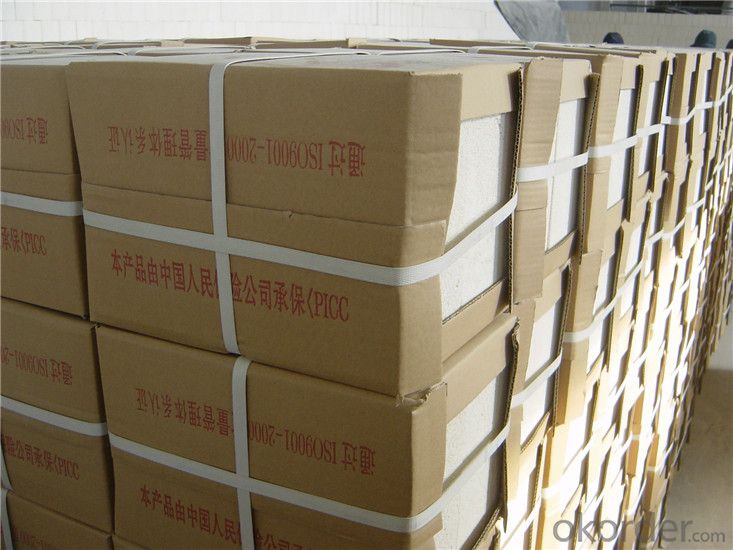

- Q:Can insulating fire bricks be used for insulation in steam boilers?
- Yes, insulating fire bricks can be used for insulation in steam boilers. These bricks are specifically designed to withstand high temperatures and provide excellent thermal insulation properties. They help to reduce heat loss and improve the overall energy efficiency of the steam boiler system.
- Q:Are insulating fire bricks resistant to nitric acid?
- Insulating fire bricks usually lack resistance against nitric acid, a highly corrosive substance that can dissolve various materials, including specific types of fire bricks. Although insulating fire bricks are intended for enduring high temperatures and providing thermal insulation, they may not possess the required chemical resilience to withstand the corroding impact of nitric acid. When anticipating exposure to nitric acid, it is recommended to employ materials specifically engineered for acid resistance in such situations.
- Q:Are insulating fire bricks resistant to electrical conductivity?
- Yes, insulating fire bricks are resistant to electrical conductivity.
- Q:Are insulating fire bricks resistant to freeze-thaw cycles?
- Yes, insulating fire bricks are generally resistant to freeze-thaw cycles. These bricks are designed to withstand extreme temperature changes, including freezing and thawing, without cracking or deteriorating.
- Q:Advantages and disadvantages of wall insulation system?
- The advantages of external insulation: external wall insulation is one of the most scientific and most efficient thermal insulation energy-saving technology, is outside the insulation material in the main enclosure structure, which can not only achieve the purpose of thermal insulation, but also protect the main structure of the building, and prolong the service life of buildings. This technology can solve the problem of energy loss in the two seasons of winter and summer indoor temperature due to the large, represents the direction of development of energy saving technology. The system does not produce thermal exterior insulation construction, so it has good energy saving effect. In winter, when the indoor heat through wall insulation materials will be effectively blocked, thereby reducing indoor heat consumption; summer, wall insulation materials will also prevent solar radiation and external heat into the room, and in the building to create a cool and comfortable environment.
- Q:Can insulating fire bricks be used for insulation in residential walls?
- Insulating fire bricks are typically not recommended for use in residential walls as insulation. While they are highly effective at withstanding extreme temperatures and providing thermal insulation in industrial settings such as furnaces and kilns, they are not designed to meet the specific requirements of residential construction. Insulating fire bricks have a high thermal conductivity, meaning they conduct heat more efficiently than traditional insulation materials like fiberglass or foam. This can result in significant heat loss and reduced energy efficiency in residential walls. Furthermore, insulating fire bricks are typically larger and heavier than conventional insulation materials, making them more difficult and costly to install in residential walls. They also lack the flexibility and ease of use that other insulation materials offer. For residential applications, it is recommended to use insulation materials specifically designed for residential walls, such as fiberglass batts, foam boards, or spray foam insulation. These materials are lightweight, easy to install, and provide excellent thermal insulation properties, helping to maintain a comfortable indoor temperature and reduce energy consumption.
- Q:Can insulating fire bricks be used in the construction of glassware production furnaces?
- Yes, insulating fire bricks can be used in the construction of glassware production furnaces. These bricks have excellent thermal insulation properties and can withstand high temperatures, making them ideal for creating a well-insulated and efficient furnace for glass production.
- Q:Can insulating fire bricks be used in the construction of ceramic fiber kilns?
- In the construction of ceramic fiber kilns, insulating fire bricks can indeed be utilized. These bricks are specifically designed to offer thermal insulation and minimize heat loss in high-temperature situations. Their exceptional insulating properties, characterized by low thermal conductivity, render them extremely suitable for maintaining elevated temperatures in kilns. The incorporation of insulating fire bricks in ceramic fiber kiln construction has the potential to heighten the kiln's overall energy efficiency and enhance its performance. However, it is crucial to guarantee that the insulating fire bricks selected align with the particular requirements and operating conditions of the ceramic fiber kiln to achieve optimal outcomes.
- Q:Do insulating fire bricks have a low thermal conductivity?
- Yes, insulating fire bricks have a low thermal conductivity.
- Q:Can insulating fire bricks be used in the construction of crucibles?
- Insulating fire bricks can indeed be utilized for constructing crucibles. These bricks are crafted from lightweight materials like clay and silica, boasting remarkable thermal insulation properties. Consequently, they are highly suitable for scenarios that require the preservation of high temperatures and minimal heat loss, such as crucible construction. Crucibles, extensively employed in industries like metallurgy and chemistry, serve the purpose of containing and melting materials at exceedingly elevated temperatures. By incorporating insulating fire bricks into crucible construction, heat loss is curtailed, energy efficiency is enhanced, and a more consistent temperature is maintained within the crucible, ultimately resulting in improved overall performance. Furthermore, the lightweight nature of these fire bricks facilitates easier handling and installation, further augmenting their appropriateness for crucible construction.
1. Manufacturer Overview |
|
|---|---|
| Location | |
| Year Established | |
| Annual Output Value | |
| Main Markets | |
| Company Certifications | |
2. Manufacturer Certificates |
|
|---|---|
| a) Certification Name | |
| Range | |
| Reference | |
| Validity Period | |
3. Manufacturer Capability |
|
|---|---|
| a)Trade Capacity | |
| Nearest Port | |
| Export Percentage | |
| No.of Employees in Trade Department | |
| Language Spoken: | |
| b)Factory Information | |
| Factory Size: | |
| No. of Production Lines | |
| Contract Manufacturing | |
| Product Price Range | |
Send your message to us
Unshaped Insulating Bricks Fire Clay Bricks for Furnace Use
- Loading Port:
- Qingdao
- Payment Terms:
- TT OR LC
- Min Order Qty:
- 1 m.t.
- Supply Capability:
- 1000 m.t./month
OKorder Service Pledge
OKorder Financial Service
Similar products
New products
Hot products
Related keywords
